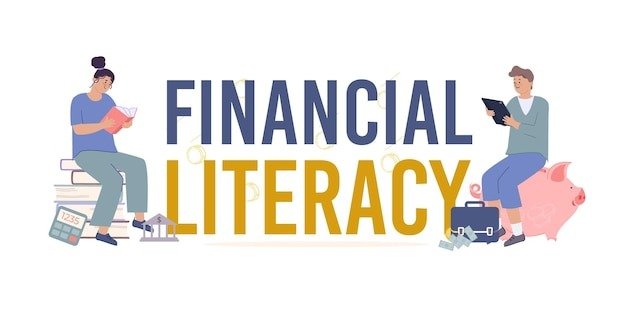This Article will show you Top 5 Major Investments for Kids Brighter Future Complete step-by-step guide. Include Advantages and Disadvantages with Frequently Asked Questions and Conclusion.
Top 5 Major Investments for Kids Brighter Future
Being a parent, guardian, or teacher can be highly numerous in priority. The love and support are dispensed while wise investments become long-term success. It is not only about monetary investment but also time, resources, and guidance. Here are the top five major investments that shape the brighter and more secure future of children.
1. Education Savings Plans:
Undeniably, perhaps the best saving for your child’s future will be a savings plan for his higher education. While the cost of further studies increases day by day, such a dedicated savings would allow your child to secure higher studies without financial ruin.
- Key Elements:
- 529 College Savings Plan
- Coverdell Education Saving Accounts, or ESAs
- UGMA/UTMA custodial accounts.
- Long-Term Benefits:
- Tax savings is applicable on some of them.
- Variety in investing choice.
- It encourages the development of a saving culture within the family.
- Actionable Tip: How to Succeed Invest early to reap the benefit of compound interest and invest in plans that support your financial goals.
2. Skill Development and Extracurricular Activities:
Skill development and extracurricular activities help children discover what they are passionate about, increases confidence, and teaches the essential life skills.
- Key Elements:
- STEM classes (robotics, coding, etc.).
- Music, dance, or art lessons.
- Sports teams or fitness programs.
- Public speaking or debate clubs.
- Long-Term Benefits:
- It improves creativity and thinking.
- It improves teaming and leadership skills
- Opportunities for Scholarships and career
- Actionable Tip: Let their choice be in activities in which they are interested or skillful rather than something in society that is so hot at the moment.
3. Health and Wellness Investments:
Good health provides a perfect foundation for a healthy future. An investment in the physical and mental health of a child makes him a robust and able-minded individual.
- Key Elements:
- Periodical medical check-ups and vaccination.
- Psychiatric counseling or any sort of mindful programs.
- Yoga sports or other types of fitness.
- Long-Term Benefits:
- This reduces long-term health expenditure.
- Enhances school or academic excellence as well as out-of-the-class performance.
- Development of lifelong good practices relating to personal hygiene
- Actionable Tip: Kids will learn to mimic the adults; be healthy, model healthy habits.
4. Financial Literacy Training:
This is a savvy investment in teaching your child how to manage money. This comes before financial independence and smart thinking as an adult.
- Key Elements:
- Age appropriate tools: piggy bank or budgeting apps
- Teach saving, investing, and philanthropy
- Introduce compound interest with experiments or stories
- Long-Term Benefits:
- Avoid being caught up by debt at later ages
- Instill entrepreneurial attitude
- Money management confidence building.
- Actionable Tip: Use small allowances and motivate them to save for particular purposes.
5. A Growth-Oriented Environment:
The environment where a child grows up is significant in terms of shaping his personality and values. A child brought up in an encouraging, growth-oriented environment grows with creativity, critical thinking, and emotional intelligence.
- Key Elements:
- Open communication and expression of emotions.
- Books and educational material, stimulating toys.
- Positive role models.
- Cultures and experiences in diversity.
- Long-Term Benefits:
- Self-esteem and adaptability.
- Life-long learning.
- Reduced exposure to negatives.
- Actionable Tip: Observe and shift the environment according to how the child changes.
Advantages and Disadvantages of These Investments
Advantages:
- Enhanced Opportunities: Education and health and skill investment better future and life choices open for children.
- Financial Security: Savings in education and financial literacy prevent debt and financial crises in old age.
- Personal Growth: Extracurricular activity and a nurturing environment build confidence, creativity, and emotional intelligence.
- Healthier Lifestyle: Wellness investments lead to long-term physical and mental health.
- Stronger Parent-Child Bonds: Being actively involved in your child’s life creates trust and bonding.
Disadvantages:
- Initial Costs: Some investments, which may be private lessons or maybe college fund, can cost some pretty penny.
- Time Commitment: Parents may incur the long time to sit and plan and oversee the event.
- Overburdening the Child: Over-scheduling might burn out or stressful the child.
- Uncertain Returns: Not all types of investments, such as extracurricular, and particular savings plans are measurable in payoffs.
- Balancing Priorities: Resource allocation has now become tough among different investments to parents.
Frequently Asked Questions
-
How early should I start investment for my child’s future?
The sooner the better. It will provide more periods for savings, planning, and benefits of compounding in other financial investments.
-
How you manage to balance financial investments with healthy habits and skill-building activities?
It can sustain a holistic plan wherein a balanced growth can be planned in finance and human development. Give the proper budget and timing so that your child will not be overwhelmed with these activities.
-
What if I have a limited budget?
Invest in low-cost but highly impactful investments such as building a positive home environment, financial literacy using simple tools, and community activities that are free of charge.
-
How do I decide on the best after-school activities for my child?
Write down what they are really interested in and build upon those. Encourage them to take up activities in which they are really interested.
-
Are education savings plans flexible?
There will be beneficiary changes and a withdrawal because of reasons unrelated to the education; and it can carry penalties some time but not always there is a necessity to look into terms and conditions before investing.
Conclusion
Investing in the future of a child does not happen overnight but needs planning and balance. A combination of education savings, skill-building, health, financial literacy, and a growth-oriented environment will secure his or her future while also preparing that child to be an all-around individual. With some difficulties, the long-term paybacks to the child as well as to the family make such investments worthwhile.










7 thoughts on “Top 5 Major Investments for Kids Brighter Future”